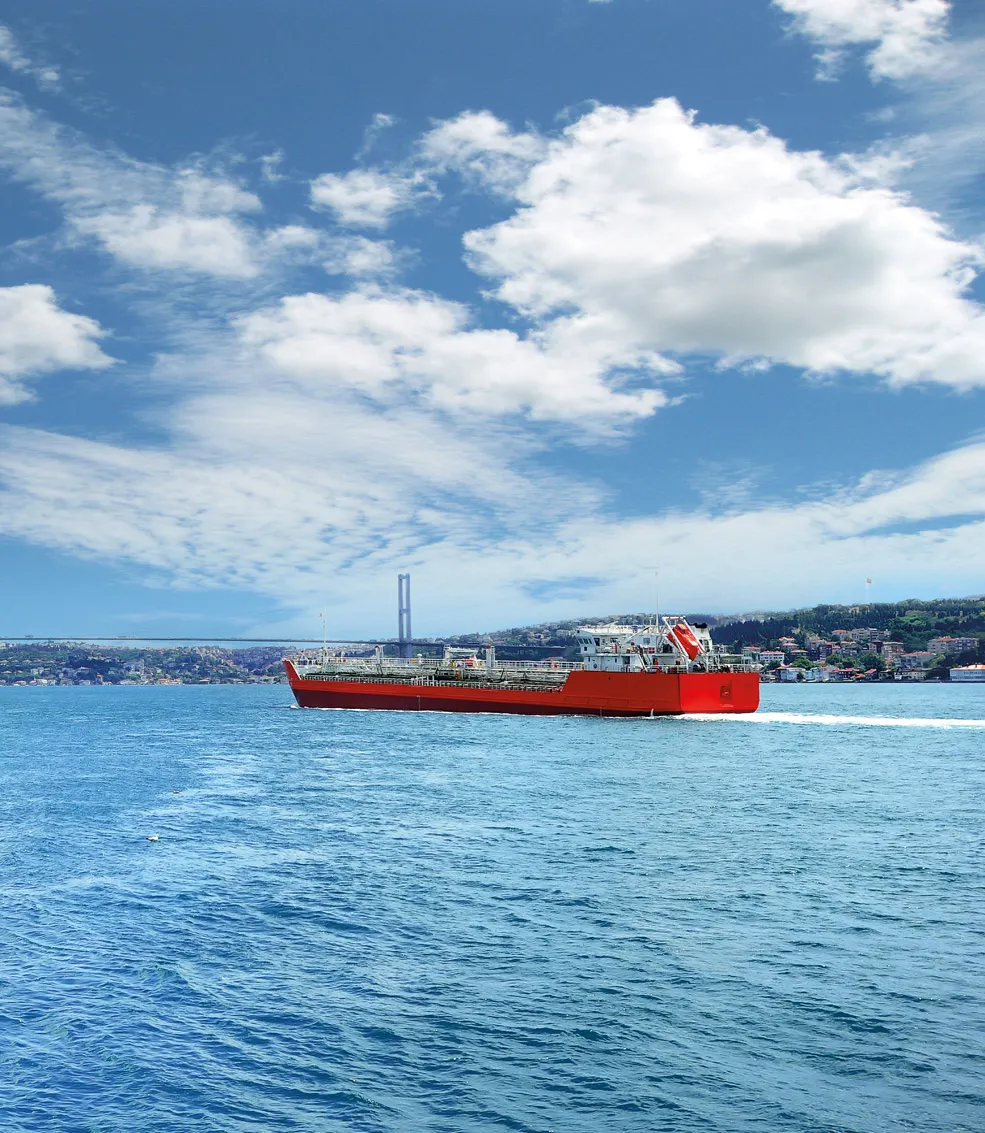Hybridization pays
There is no simple way to overcome all the environmental challenges facing the shipping industry. Hybridization is considered a key strategy. DNV GL and Total joined forces with several industry partners to look at a specific scenario: auxiliary engines on small tankers.
Hybrid scenarios, most experts agree, are the best approach to optimizing the energy household on board while ensuring com-pliance with emission regulations.
To better understand how specific battery configurations can reduce operational costs while improving the emission pro-file, build a solid business case for such scenarios, and provide decision support for newbuilding projects, DNV GL initiated a joint industry project (JIP) with oil major Total, the ship designer FKAB Marine Design, the battery manufacturer SAFT Batteries, the shipowner Viken Shipping, and the ship operator Wallem Shipmanagement.

Balancing energy needs
The JIP focused on the long-term benefits of lithium-ion battery systems for auxiliary power management on board smaller-sized oil or product tankers in the 17,000 dwt range. Reference data, such as trading patterns, typical modes of operation, and power loads were aggregated from conventional sister vessels. On one of these ships, live power load recording equipment was installed to obtain realistic data. The deployment area considered in the JIP included typical routes in northern and western European waters.
All this information also served as input for the development of a new ship design concept. Four possible hybrid auxiliary power system configurations were identified, while the main engine and the shaft generator configurations were identical.
The project looked at potential benefits of batteries when used for various purposes: to boost the available supply of power at times of maximum demand or in case of machinery failure (“spinning reserve”); to avoid loading down the generator sets excessively, which causes high fuel consumption (“peak shaving”); to achieve a more even loading of the generators (”load levelling”); to allow the generators to run at the most economical load levels and reduce the number of generator sets required on board; to feed on-demand power to equipment as needed (such as discharge pumps, tank cleaning equipment, thrusters during port navigation); and to provide propulsion power at very low transit speeds (in port) as well as in high-sea emergency operation. Based on the power needs of the reference ships, the required battery size when eliminating one generator set was calculated to be 400 kWh.

Building the business case
These areas of battery use were subjected to comprehensive cost-versus-benefit and return-on-investment (ROI) analyses and environmental evaluations. Safety considerations, operational requirements, dependence on third parties, and specific technical requirements were likewise considered.
For the capital expenditure (CAPEX) calculations, the study assumed a battery life cycle of ten years and a ship lifetime of 20 years. The operating expenditures (OPEX), composed of fuel and maintenance costs, depend on the engine running hours. A battery system should reduce both the installed engine power and the hours of operation to lower the total cost of ownership. The fuel bill for the auxiliary engines was cut by about ten to eleven per cent compared to the base case. The payback period was less than two years, and net savings in the range of 800,000 US dollars. The auxiliary engine running hours were reduced by 50 to 62 per cent.
While the effects on the EEDI remain below the tolerance threshold, CO2, SOX and particulate matter (PM) emissions are reduced by about ten per cent, and NOX emissions by roughly five per cent for all hybrid configurations reviewed for the study.
Besides the economic and environmental benefits, the JDP once more proofed that batteries offer other means of energy saving, making them a favourable solution for small tankers, such as to store surplus and regenerative energy on board for peak demand situations, providing instant back-up power and act as load optimizer. Further the generators sets can run at their most energy-efficient levels, yet provide enough reserve capacity for peak loads and emergencies.
Over a 20-year operating period, all hybrid configurations investigated perform better than the conventional base scenario. It is thus safe to say that hybridization of the auxiliary machinery is beneficial, at least for smaller tankers, and should be considered in all newbuilding projects. The required battery package size should be determined based on the ship’s power needs
Contact us

